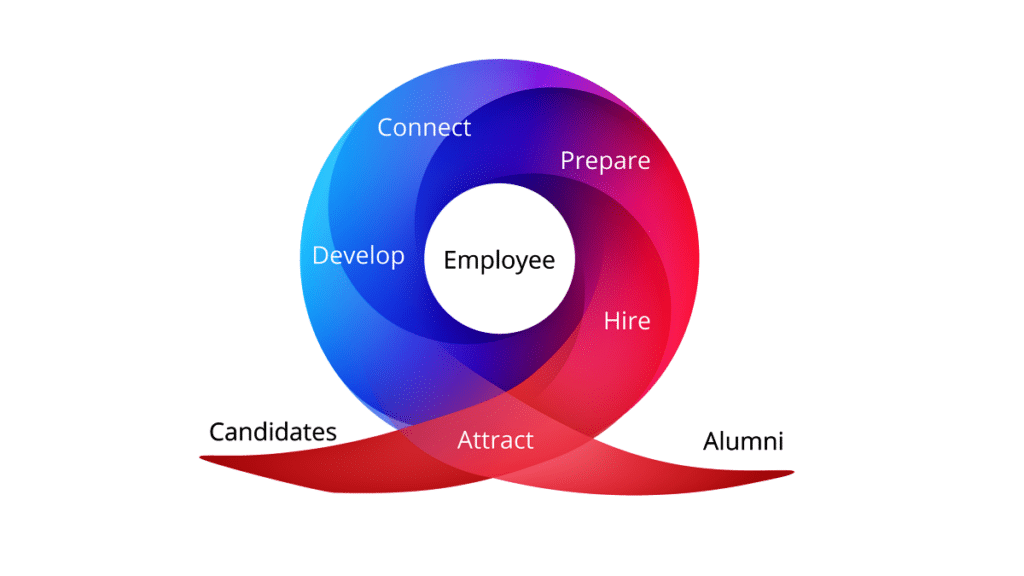
Estimated reading time: 5 minutes
(Editor’s Note: Today’s article is brought to you by our friends at SilkRoad Technology, a provider of strategic onboarding solutions to drive workforce readiness and organizational transformation. They were recently recognized as one of Chicago’s Best Places to Work. Many congrats to them. Enjoy the article!)
According to SilkRoad Technology’s Full-time Flexibility Report, 2 in 5 office workers (40%) are planning to look for a new job because of the way their employer handled the pandemic. This data shouldn’t be a surprise. It aligns with the comments when we’ve been reading about “The Great Resignation” and the “turnover tsunami”. The reason I want to remind us about the retention challenges we’re facing right now is because it’s possible we will be experiencing this for quite some time.
I totally understand that organizations might be understaffed right now and they’re trying to get their operations back to some level of normalcy, but it doesn’t change the fact that we’re not going back to pre-pandemic “normal” anytime soon. If ever. Now might be time to realize that the next normal isn’t necessarily a bad thing.
The business world is constantly changing and as a result, the employee experience should constantly evolve with it. I’m not talking about the different phases of the employee lifecycle: hiring, onboarding, engagement, development, retention, and separation. Those really don’t change much.
What should be changing is the organization’s approach to these lifecycle phases, which is the essence of the employee experience. Organizations should ask themselves, “What is our candidate experience?”, “How will the organization conduct onboarding?” Those experiences can and should change over time because employee wants and needs change.
Which takes us back to the statistic at the beginning of this article about employees looking for new opportunities. I believe what we’re seeing right now is this – what employees want in their work experience is changing. Organizations need to think about how they’re going to address what employees want in their employee experience.
If you’re saying to yourself, “I get it, but where do I start?”, here are five things to consider when the organization is mapping out how to maximize the employee experience:
- Start focusing on process. The employee experience isn’t a “one and done” event and I think we have to stop thinking about it in those terms. The focus of the employee experience should be on building a continuous process. The reason I’m saying this is because it might be easier to manage when it comes to creating change. Typically, we expect processes to be constantly changing.
- Employee engagement is a must. I like to define employee engagement as what happens when an employee can ‘connect’ the work they do to the organization’s goals. An example would be “I do good work and can see it in terms of customers being happy, the company is profitable, we’re growing and expanding.” Engagement needs to happen throughout the entire employee lifecycle, not just during one phase.
- Metrics are good. Analytics are better. Don’t get me wrong. I love metrics. And they are useful. But we have to remember that they’re backward looking. It’s time to add some talent analytics, which are forward looking. Forward looking information allows organizations to prepare for the changes that need to take place. (A reminder of #1 – Start focusing on the process.)
- Be prepared to adjust. I’ve mentioned a couple times already that organizations need to be prepared to regularly fine-tune their employee experience. It could be helpful to invest in good change management training for the organization. Change is hard and can be very messy. Not only do organizations (and individuals) need to get better at it, they need to get better at dealing with small changes within a big change process.
- Think like a recruiter every day. When I think of talent acquisition, I think of communication. We’re communicating with hiring managers, candidates, and employees. We’re discussing the benefits of working with the organization AND the benefits of staying with the company. “Think like a recruiter” is a reminder that the key to successfully processing change is with clear communications and a focus on continually attracting employees to the organization and its opportunities.
As you can see, once the employee is hired and onboarded, the work doesn’t stop. This is the reason that the employee experience needs to continue to evolve.
You know, I started today’s article with a mention of the pandemic, but make no mistake, this conversation about retention isn’t a pandemic issue. The workplace – and employee expectations – have been changing for a while. Maybe the pandemic accelerated it, but this conversation about the evolving employee experience is going to last for a long time. And honestly, organizations should want it to. Because it’s what it’s going to take to remain competitive in today’s talent market.
P.S. If you want to learn more about staying competitive in today’s talent market, join me at SilkRoad Connections. This year’s event will be a one-day, virtual program on Tuesday, October 26, 2021. The program has been preapproved for recertification credits by the Society for Human Resource Management (SHRM) and the Human Resources Certification Institute (HRCI). Look forward to seeing you there!
The post The Employee Lifecycle Has Not Changed But the Employee Experience Needs To appeared first on hr bartender.



0 Commentaires